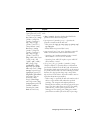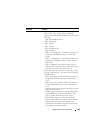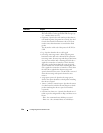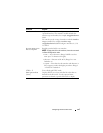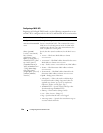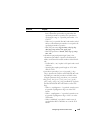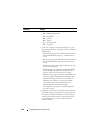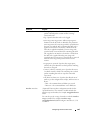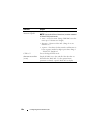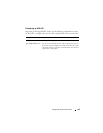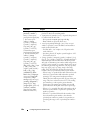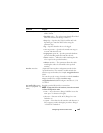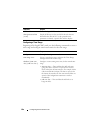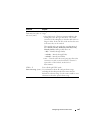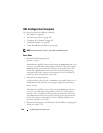
Configuring Access Control Lists 621
continued
• routing—Specifies that IP ACL rule matches on routed
packets. Routed packets contain an IPv6 “routing”
extension header.
• log—Specifies that this rule is to be logged.
•time-range
time-range-name
—Allows imposing time
limitation on the ACL rule as defined by the parameter
time-range-name. If a time range with the specified name
does not exist and the ACL containing this ACL rule is
applied to an interface or bound to a VLAN, then the
ACL rule is applied immediately. If a time range with
specified name exists and the ACL containing this ACL
rule is applied to an interface or bound to a VLAN, then
the ACL rule is applied when the time-range with
specified name becomes active. The ACL rule is removed
when the time-range with specified name becomes
inactive.
• assign-queue
queue-id
—Specifies the assign-queue,
which is the queue identifier to which packets matching
this rule are assigned.
• {mirror | redirect}
unit/slot/ port
—Specifies the mirror
or redirect interface which is the unit/slot/port to which
packets matching this rule are copied or forwarded,
respectively.
•rate-limit
rate burst-size
—Specifies the allowed rate of
traffic as per the configured rate in kbps, and burst-size in
kbytes.
– Rate – the committed rate in kilobits per second
– Burst-size – the committed burst size in Kilobytes.
interface
interface
(Optional) Enter interface configuration mode for the
specified interface. The
interface
variable includes the
interface type and number, for example tengigabitethernet
1/0/3.
You can also specify a range of interfaces with the interface
range command, for example, interface range
tengigabitethernet 1/0/8-12 configures interfaces 8, 9, 10,
11, and 12.
Command Purpose



